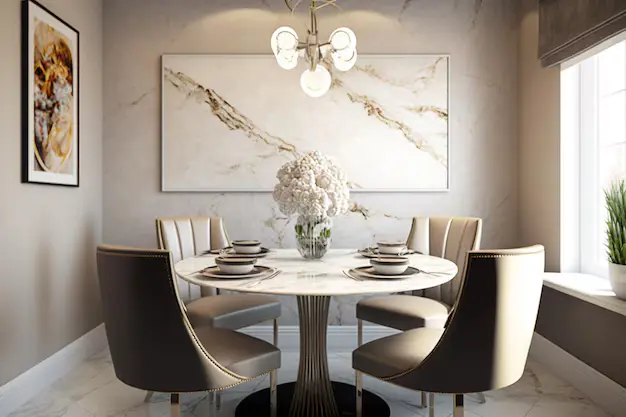Unveiling the Art of Interior Design: Transforming Spaces into Masterpieces
Interior design is more than just decorating a space—it’s about creating an environment that reflects your personality, meets your functional needs, and enhances your overall well-being. Whether you’re moving into a new home, renovating your current space, or simply looking to refresh your surroundings, understanding the principles and trends of interior design can help you achieve a stunning and harmonious result. Unveiling the Art of Interior Design: Transforming Spaces into Masterpieces
Understanding the Basics
Before diving into specific styles and trends, it’s important to grasp the foundational principles of interior design:
- Balance: Achieving visual equilibrium in a space. This can be symmetrical (formal balance), asymmetrical (informal balance), or radial (elements arranged around a central point).
- Harmony and Unity: Ensuring all elements of a room work together to create a cohesive look. This involves consistency in color, style, and theme.
- Contrast: Adding visual interest by juxtaposing different elements, such as light and dark colors, rough and smooth textures, or large and small shapes.
- Rhythm: Creating a sense of movement through patterns and repetition of design elements like color, shape, or texture.
- Scale and Proportion: Ensuring that furniture and decor items are appropriately sized for the room and in relation to each other.
- Functionality: Designing spaces that are not only beautiful but also practical and comfortable for daily use.
Popular Interior Design Styles
1. Modern
Characterized by clean lines, minimalism, and a neutral color palette, modern design emphasizes simplicity and functionality. Key elements include sleek furniture, open spaces, and the use of materials like glass, metal, and concrete.
2. Contemporary
Often confused with modern design, contemporary design is more fluid and adaptable to current trends. It features a mix of textures, bold colors, and innovative materials, with an emphasis on comfort and sustainability.
3. Scandinavian
Known for its simplicity, functionality, and connection to nature, Scandinavian design incorporates light colors, natural materials, and minimalistic decor. This style often features clean lines, wooden furniture, and cozy textiles.
4. Industrial
Inspired by old factories and industrial spaces, this style showcases raw materials like exposed brick, metal, and wood. Industrial design often includes open floor plans, high ceilings, and utilitarian furniture.
5. Traditional
Rooted in classic European decor, traditional design exudes elegance and sophistication. It features rich colors, ornate furniture, and detailed molding. Common elements include plush fabrics, antique pieces, and symmetrical arrangements.
6. Bohemian
Bohemian, or boho, design is all about creativity, individuality, and a mix of different cultures and styles. It incorporates vibrant colors, eclectic furniture, and an abundance of patterns and textures.
Current Trends in Interior Design
1. Sustainable Design
With growing awareness of environmental issues, sustainable design is becoming increasingly popular. This trend emphasizes eco-friendly materials, energy-efficient appliances, and a focus on reducing waste.
2. Biophilic Design
Biophilic design seeks to connect interior spaces with nature, incorporating natural elements like plants, natural light, and organic materials. This trend aims to improve well-being and create a calming atmosphere.
3. Smart Homes
The integration of technology into home design is revolutionizing the way we live. Smart homes feature automated lighting, heating, and security systems, as well as smart appliances that can be controlled remotely.
4. Maximalism
In contrast to minimalism, maximalism embraces bold colors, patterns, and an abundance of decor. This trend encourages personal expression and creativity, allowing for a more vibrant and dynamic space.
5. Mixed Metals
Mixing different metal finishes, such as brass, copper, and chrome, adds visual interest and a contemporary touch to interiors. This trend works well in various styles, from modern to traditional.
Tips for Designing Your Space
- Start with a Plan: Before making any changes, create a design plan that includes your goals, budget, and timeline. This will help you stay organized and focused.
- Consider Your Lifestyle: Think about how you use your space and what your needs are. Your home should be both functional and comfortable.
- Choose a Color Scheme: Select a color palette that reflects your style and creates the desired mood for each room.
- Invest in Quality: Whenever possible, invest in high-quality furniture and decor. These pieces will last longer and provide better comfort and functionality.
- Don’t Be Afraid to Experiment: Interior design is a creative process, so don’t be afraid to try new things and take risks. Mix different styles, colors, and textures to create a unique and personalized space.
Interior design is an evolving art that allows you to transform your home into a space that truly reflects who you are. By understanding the principles and trends, and by following your instincts and preferences, you can create an environment that is not only beautiful but also a joy to live in. Unveiling the Art of Interior Design: Transforming Spaces into Masterpieces.




Leave a Reply